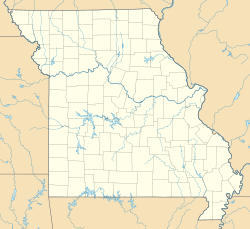Sanborn Field facts for kids
|
Sanborn Field and Soil Erosion Plots
|
|

View of Sanborn Field from the adjacent Bond Life Sciences Center on the University of Missouri campus
|
|
| Location | Columbia, Missouri |
|---|---|
| Area | 7 acres (2.8 ha) |
| Built | 1888 |
| NRHP reference No. | 66000413 |
Quick facts for kids Significant dates |
|
| Added to NRHP | October 15, 1966 |
| Designated NHL | July 19, 1964 |
Sanborn Field is a special outdoor laboratory at the University of Missouri in Columbia, Missouri. It's a place where scientists study farming. This field started in 1888, making it the very first place in the United States to measure how much soil washes away (called erosion) and how water runs off the land. They studied this for different crops and farming methods.
The important work done at Sanborn Field helped create rules for soil conservation in the United States. Because of its history and importance, Sanborn Field was named a National Historic Landmark in 1964. Today, the field is still managed by the university's School of Natural Resources.
What is Sanborn Field?
Sanborn Field is located on the east side of the University of Missouri campus. The state bought this land for the university in the 1870s. The field is about 7 acres (2.8 hectares) in size. It is surrounded by streets and buildings in Columbia, Missouri.
The field is divided into many smaller sections. Each section measures about 52.5 feet by 118.5 feet (16 by 36 meters). These smaller sections allow scientists to test different farming ideas side-by-side.
A Look at Sanborn Field's History
The field was started by Dean J.W. Sanborn. He wanted to learn how useful manure was as a plant food, also known as a fertilizer. He also wanted to understand how crop rotation worked. Crop rotation is when farmers change the types of crops they grow in a field each season.
Around 1914, the focus of the experiments changed. Scientists started to study chemical fertilizers more. They also looked at how to make tired or "exhausted" soils healthy again. These experiments continue even today. Scientists still use the plots to study different ways to manage farm land over a long time.
Something very cool happened at Sanborn Field in 1945. A new medicine called Chlortetracycline was found in a soil sample from plot 23. This was the first time this type of medicine, called a tetracycline, was discovered!



